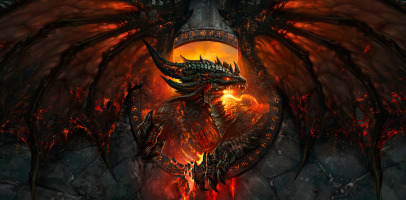
Modern game production dictates that everything released must have multiplayer functionality, regardless of development budgets and how appropriate a multiplayer feature might be to a particular title. Although this trend is a headache for many a developer, it can also be a heartache for those who end up becoming particularly attached to a game's multiplayer option as sadly, these features have no guaranteed permanence. [break]
The life expectancy of any title's multiplayer presence is hard to pin down. Singling out EA as an example due to its particularly highly publicised server body count. The publisher recently announced that the Tiger Woods PGA Tour 11 servers will close next month, placing its online life span at just over two years, with the title originally launching in June 2010.

EA announced a cull of 11 servers in April which reveals a range of differently aged titles. Although closing down servers for the seven-year old Burnout Revenge on the face of it seems unsurprising, it seems less fair for the barely one-year-old co-op platformer Spare Parts to have its servers swiped from under its feet. However, thinking in terms of fairness is unreasonable when it comes to big business like games and there is no denying which of the two titles mentioned above proved the most popular.
'The decisions to retire older EA games are never easy,' said an EA Sports spokesperson. 'The development teams and operational staff pour their hearts into these games almost as much as the customers playing them and it is hard to see one retired.'
It's hard to criticise a publisher faced with dwindling interest in a title and I doubt anybody ever accuses the developers of not caring. EA's policy does not put a best-before date on a game's existence in the multiplayer space but instead takes the line that when numbers dwindle to 1% of online players across all of the publisher's titles, then it is no longer feasible to pour any more investment into server upkeep.

'As games get replaced with newer titles, the number of players still enjoying the older games dwindles,' adds the spokesperson. 'We would rather our hard-working engineering and IT staff focus on keeping a positive experience for the other 99% of customers playing our more popular games.'
This attitude and outlook pushes towards two things. Firstly, it leads to a greater and understandable homogenisation of titles from large publishers chasing and pandering to that 99%, which from a business point of view is difficult to criticise. Secondly, as hinted at by that comment about games being replaced with newer titles, it perpetuates the idea that games are only good-to-play for a limited period after release and feeds into a continued culture of sequels and iterative updates to what is essentially the same game in the case of some sports titles.
This second point is, again, difficult to argue with, as from a business point of view it encourages people to buy into the same sort of content and keeps the business afloat without any major risk. But the background idea of the impermanence of servers has the potential to bite publishers in the backside when they do try and do something new and bold.
News that EA's giant and expensive MMO project, The Old Republic, has seen a disappointing drop off and is soon to transition to a free-to-play model could be partly as a result of a lack of trust from players who may be reluctant to risk their time and money with a publisher that has made no secret of wanting to prioritise newer titles.
Whilst it might be sad for the truly dedicated 1%, the notion of a 2011 edition of a Tiger Woods title's multiplayer servers being shut down is not in isolation a surprise. The franchise is, after all, going to receive annual updates as hinted by the game's name until Tiger Woods does something to really upset the sponsors. But MMOs demand a lot of trust and investment from their player base, especially when coupled with an online subscription. The rather intimidating server body count available on EA's websites might be a list of games that very few people play online any more, but it is still difficult to ignore and has to raise questions in the minds of those thinking of sinking time into its new MMO.
If playing an MMO is somewhat of a risk however, building one appears to be akin to dropping the keys to your Lamborghini on hire from the mob onto number 32 red and hoping for the best. Not only are the development costs normally higher than traditional games, but the development then continues long after the title has released, with both demands for new content and constant maintenance. Actual running costs of MMOs are hard to pin down, but World of Warcraft reportedly cost $200m to maintain in its first four years alone, with that cost mostly absorbed by basic customer service.
The continued development requirement also raises the major issue that all new MMOs will face. When you release an MMO, you are entering the same space as the aforementioned long running World of Warcraft. The danger is to consider this great beast as a nearly decade-old game, but it is more accurately a very new game that was released in 2004 and has been constantly and significantly updated ever since. Unfortunately, the way to succeed as an MMO appears to be to start doing it before anyone else does, which is difficult without the use of a time machine.

Compared to multiplayer servers for regular games, which seem to exist in a more binary state of existence, new MMOs appear to go through a more steady lifecycle. Starting with the pre-launch hype speculating on how it will revolutionise the genre with some neat new mechanic, it follows with a launch often peppered with technical issues and punctuated by a failure to deliver on its promises. After this is a period of silence where people tend to forget about the new title until it jumps back into the news with server merges or closures after dwindling player interest. This is now often followed by an announcement of switching to a free-to-play basis if it didn't launch with one in a bid to shake up the game's business model. Sadly, the MMO can sometimes bow out completely once it stops being financially viable, evaporating financial and time-based player investment, which is bound to leave a bitter taste.
Outside of market champion World of Warcraft's 9 million-strong subscriber base, which is incidentally noted as a much reduced figure from its 12 million subscriber heights, MMOs are content with much lower numbers. Even the more successful and long lasting worlds have a shadow of this figure. Iconoclastic space trading MMO Eve Online reports approximately 400,000 subscribers and even the much beloved City Of Heroes only broke 200,000 active monthly users back in its peak in 2005 following the launch of its first expansion.

For all the doom and gloom, high profile MMOs rarely vanish completely and many survive by scaling back their infrastructure. Warhammer: Age of Reckoning proves this scalability when it dropped from 800,000 to 300,000 subscribers in the space of its launch year and responded by cannibalising its servers down to three to survive, avoiding the necessity to switch to a free-to-play model. Some notable titles do however still fail, with Tabula Rasa, remaining a sad memory for many, being as it was released in 2007 and closed in 2009.
Due to the sheer scale of development and the amount that tends to ride on the continuity of an MMO, a dedicated player base can often save it. However, due to the more disposable and short term nature of smaller titles, the same will rarely be true. Once it becomes a numbers game, then a small dedicated player base still can't afford to be too small.
Multiplayer services are expensive to run, even with increasingly sophisticated network infrastructure and technology. Sadly, in the absence of any solid formula for how long they are likely to survive for, at present you just have to hope you're not part of the 1% that really gets hooked on a particular multiplayer experience that the rest of the world is baffled by.
The pattern of server closures and the cycle of failure in larger projects goes some way to reinforce the idea that the games industry is quick, changeable and more than a little fickle at times, but the silver lining to this is of course that there will always be something new and interesting on the horizon, even if that does force us to move on from something we love once in a while.
The life expectancy of any title's multiplayer presence is hard to pin down. Singling out EA as an example due to its particularly highly publicised server body count. The publisher recently announced that the Tiger Woods PGA Tour 11 servers will close next month, placing its online life span at just over two years, with the title originally launching in June 2010.

Online for just over two years and gone.
EA announced a cull of 11 servers in April which reveals a range of differently aged titles. Although closing down servers for the seven-year old Burnout Revenge on the face of it seems unsurprising, it seems less fair for the barely one-year-old co-op platformer Spare Parts to have its servers swiped from under its feet. However, thinking in terms of fairness is unreasonable when it comes to big business like games and there is no denying which of the two titles mentioned above proved the most popular.
'The decisions to retire older EA games are never easy,' said an EA Sports spokesperson. 'The development teams and operational staff pour their hearts into these games almost as much as the customers playing them and it is hard to see one retired.'
It's hard to criticise a publisher faced with dwindling interest in a title and I doubt anybody ever accuses the developers of not caring. EA's policy does not put a best-before date on a game's existence in the multiplayer space but instead takes the line that when numbers dwindle to 1% of online players across all of the publisher's titles, then it is no longer feasible to pour any more investment into server upkeep.

Burnout Revenge survived a more respectable seven years.
'As games get replaced with newer titles, the number of players still enjoying the older games dwindles,' adds the spokesperson. 'We would rather our hard-working engineering and IT staff focus on keeping a positive experience for the other 99% of customers playing our more popular games.'
This attitude and outlook pushes towards two things. Firstly, it leads to a greater and understandable homogenisation of titles from large publishers chasing and pandering to that 99%, which from a business point of view is difficult to criticise. Secondly, as hinted at by that comment about games being replaced with newer titles, it perpetuates the idea that games are only good-to-play for a limited period after release and feeds into a continued culture of sequels and iterative updates to what is essentially the same game in the case of some sports titles.
This second point is, again, difficult to argue with, as from a business point of view it encourages people to buy into the same sort of content and keeps the business afloat without any major risk. But the background idea of the impermanence of servers has the potential to bite publishers in the backside when they do try and do something new and bold.
News that EA's giant and expensive MMO project, The Old Republic, has seen a disappointing drop off and is soon to transition to a free-to-play model could be partly as a result of a lack of trust from players who may be reluctant to risk their time and money with a publisher that has made no secret of wanting to prioritise newer titles.
Whilst it might be sad for the truly dedicated 1%, the notion of a 2011 edition of a Tiger Woods title's multiplayer servers being shut down is not in isolation a surprise. The franchise is, after all, going to receive annual updates as hinted by the game's name until Tiger Woods does something to really upset the sponsors. But MMOs demand a lot of trust and investment from their player base, especially when coupled with an online subscription. The rather intimidating server body count available on EA's websites might be a list of games that very few people play online any more, but it is still difficult to ignore and has to raise questions in the minds of those thinking of sinking time into its new MMO.
If playing an MMO is somewhat of a risk however, building one appears to be akin to dropping the keys to your Lamborghini on hire from the mob onto number 32 red and hoping for the best. Not only are the development costs normally higher than traditional games, but the development then continues long after the title has released, with both demands for new content and constant maintenance. Actual running costs of MMOs are hard to pin down, but World of Warcraft reportedly cost $200m to maintain in its first four years alone, with that cost mostly absorbed by basic customer service.
The continued development requirement also raises the major issue that all new MMOs will face. When you release an MMO, you are entering the same space as the aforementioned long running World of Warcraft. The danger is to consider this great beast as a nearly decade-old game, but it is more accurately a very new game that was released in 2004 and has been constantly and significantly updated ever since. Unfortunately, the way to succeed as an MMO appears to be to start doing it before anyone else does, which is difficult without the use of a time machine.

If you release an MMO, you are going up against a massively and consistently developed dragon.
Compared to multiplayer servers for regular games, which seem to exist in a more binary state of existence, new MMOs appear to go through a more steady lifecycle. Starting with the pre-launch hype speculating on how it will revolutionise the genre with some neat new mechanic, it follows with a launch often peppered with technical issues and punctuated by a failure to deliver on its promises. After this is a period of silence where people tend to forget about the new title until it jumps back into the news with server merges or closures after dwindling player interest. This is now often followed by an announcement of switching to a free-to-play basis if it didn't launch with one in a bid to shake up the game's business model. Sadly, the MMO can sometimes bow out completely once it stops being financially viable, evaporating financial and time-based player investment, which is bound to leave a bitter taste.
Outside of market champion World of Warcraft's 9 million-strong subscriber base, which is incidentally noted as a much reduced figure from its 12 million subscriber heights, MMOs are content with much lower numbers. Even the more successful and long lasting worlds have a shadow of this figure. Iconoclastic space trading MMO Eve Online reports approximately 400,000 subscribers and even the much beloved City Of Heroes only broke 200,000 active monthly users back in its peak in 2005 following the launch of its first expansion.

The original superhero MMO only ever had a modest subscriber base, despite being fondly remembered and critically well received.
For all the doom and gloom, high profile MMOs rarely vanish completely and many survive by scaling back their infrastructure. Warhammer: Age of Reckoning proves this scalability when it dropped from 800,000 to 300,000 subscribers in the space of its launch year and responded by cannibalising its servers down to three to survive, avoiding the necessity to switch to a free-to-play model. Some notable titles do however still fail, with Tabula Rasa, remaining a sad memory for many, being as it was released in 2007 and closed in 2009.
Due to the sheer scale of development and the amount that tends to ride on the continuity of an MMO, a dedicated player base can often save it. However, due to the more disposable and short term nature of smaller titles, the same will rarely be true. Once it becomes a numbers game, then a small dedicated player base still can't afford to be too small.
Multiplayer services are expensive to run, even with increasingly sophisticated network infrastructure and technology. Sadly, in the absence of any solid formula for how long they are likely to survive for, at present you just have to hope you're not part of the 1% that really gets hooked on a particular multiplayer experience that the rest of the world is baffled by.
The pattern of server closures and the cycle of failure in larger projects goes some way to reinforce the idea that the games industry is quick, changeable and more than a little fickle at times, but the silver lining to this is of course that there will always be something new and interesting on the horizon, even if that does force us to move on from something we love once in a while.

MSI MPG Velox 100R Chassis Review
October 14 2021 | 15:04






Want to comment? Please log in.